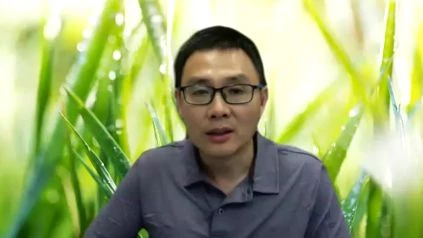Hui Li, PhD at Univeristy of Virginia UVA IDs Gene Responsible for Deadly Glioblastoma
Scientists have found an oncogene (a gene causing cancer) that is responsible for glioblastoma, the most deadly brain tumor. For a cancer that is often terminal, the finding provides a promising new therapeutic target.
The researchers claim that for the survival of cancer cells, the oncogene is important. Cancer cells die without it. Scientists have already developed several targeted treatments with a similar “oncogene addiction” for other cancers.
Glioblastoma Targeting
Oncogenes are genes that arise normally and spiral out of control and cause cancer. AVIL, the oncogene discovered by Li and his colleagues, typically helps cells retain their size and shape. But a number of factors can move the gene into overdrive, the researchers found. This activates the development and propagation of cancer cells.
Blocking the function of the gene completed the destruction of glioblastoma cells in laboratory mice but had no effect on healthy cells. This indicates an successful treatment choice may be to target the gene.
Identify Oncogenes
An significant step in developing a cure is to identify an oncogene, as Li and his colleagues have done. It is therefore very difficult to classify oncogenes. Within cells the world is so dynamic that it is difficult to determine cause-and-effect.
Li and his team were not yet working on glioblastoma when the smell that led to the discovery was first captured. Instead, they were researching a rare childhood cancer called rhabdomyosarcoma. (Typically, childhood cancers are easier to grasp than adult cancers and require less mutations.)
The researchers found an abnormality in the AVIL gene during their study. This led them to study adult cancers to see whether they could relate to the gene. And that was it. The researchers concluded that the gene plays a “important role” in glioblastoma, they report detailing their results in a new scientific paper.
Li and his team believe that their technique will be used to classify other oncogenes, potentially leading to potential therapies for a number of cancers.
“Many people in this day and age assumed that all the important oncogenes were discovered, here we uncovered a novel, strong oncogene and elucidated its signaling pathways, all starting from studying a variant of the structure in a pediatric cancer. In the past, several important cancer findings have originated from the study of pediatric tumors, “Li said. “We conclude this is a technique for identifying novel players in other adult cancers that can be implemented.”
Findings reported in Glioblastoma
The researchers published their findings in Nature Communications, the scientific journal. Zhongqiu Xie, Pawel Å, was part of the research team. Janczyk, Ying Zhang, Aiqun Liu, Xinrui Shi, Sandeep Singh, Loryn Facemire, Kristopher Kubow, Zi Li, Yuemeng Jia, James W. Mandell, Roger Abounader, Dorothy Schafer and Li.
The study was funded by the National Cancer Institute of the National Institutes of Health, grant CA240601, and grant SU2C-AACR-IRG0409, Stand Up To Cancer. Subscribe to the Making of Medicine blog, to keep up with the latest UVA medical research articles.

